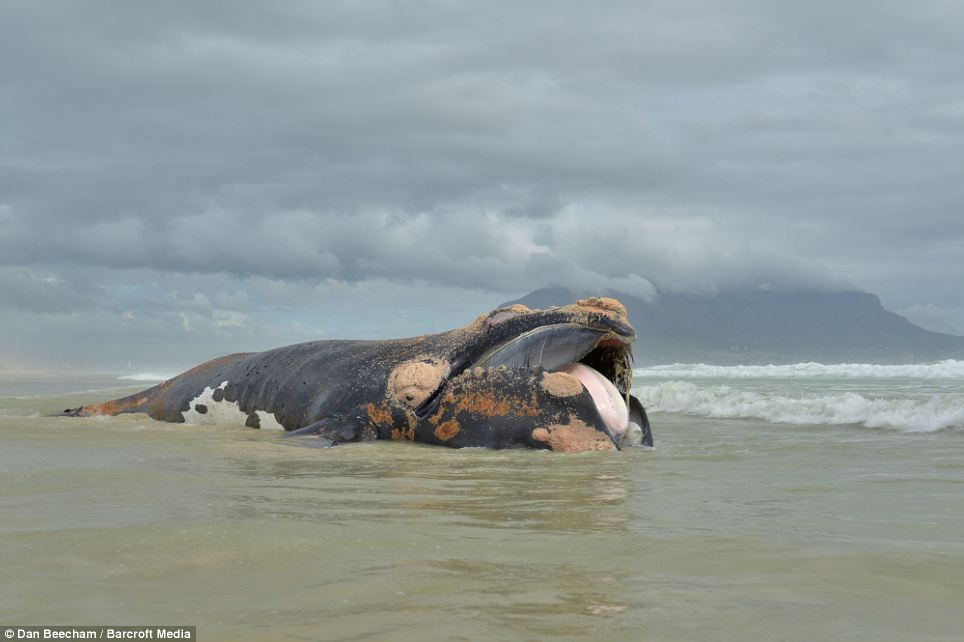As one of the largest animals on earth, blue whales (Balaenoptera musculus) are known for their impressive size and strength. However, even these giants are not invincible. In recent years, there have been reports of blue whale bitten in half, leaving many people wondering what could have caused such a devastating attack. In this article, we’ll explore some of the possible culprits behind these incidents.
Who or What Could Bite a Blue Whale in Half?
When we think of predators capable of taking down a massive whale, the first thing that comes to mind is usually a shark. While it’s certainly possible for sharks to attack blue whales, they typically go after smaller prey. Orcas (also known as killer whales), on the other hand, have been known to attack and kill blue whales. These intelligent cetaceans have specialized hunting tactics and powerful jaws that can deliver a fatal bite. Other potential culprits include large crocodiles, such as the saltwater crocodile, which has been known to attack and kill adult whales in rare cases.
The Incident: A Blue Whale Bitten in Half
In 2014, a blue whale was discovered washed up on a beach in Newfoundland, Canada. Upon closer examination, it was clear that the whale had been bitten in half. While the cause of this particular incident is unknown, experts speculate that an orca may have been responsible for the attack.
When Do These Attacks Occur?
Blue whales are generally found in open ocean environments, where they spend most of their time feeding on krill and other small creatures. While they are generally safe from predators in these areas, they may be more vulnerable when passing through narrow channels or other areas where larger predators are present. Attacks on blue whales are relatively rare, but they have been reported in various parts of the world, including Canada, South Africa, and Antarctica.
How to Protect Blue Whales from Attacks
Protecting blue whales from predators is a challenging task, as they are widespread and difficult to monitor. However, there are some steps that can be taken to reduce their vulnerability to attack. For example, shipping lanes can be rerouted to avoid areas where large predators are known to hunt. Additionally, researchers are working on developing acoustic deterrents and other technologies that may help to keep predators at bay.
Pros and Cons of Various Approaches to Protecting Blue Whales
While protecting blue whales from predators is important, there are pros and cons to different approaches. For example, rerouting shipping lanes may help to reduce the risk of attacks, but it could also result in longer journey times and increased costs. Acoustic deterrents and other technologies may be effective in keeping predators away, but they could also have unintended consequences, such as disrupting the behavior of other marine animals.
Alternatives to Rerouting Shipping Lanes
In addition to rerouting shipping lanes, there are other alternatives that could help to protect blue whales from predators. One potential solution is to establish protected areas where whales can feed without fear of attack. These areas could be designated based on seasonal migrations or other factors that are known to attract predators. Another option would be to develop new fishing technologies that target smaller, less vulnerable prey, which would reduce the number of large predators in an area.
Step-by-Step Guide: What to Do if You Encounter a Blue Whale
If you ever find yourself lucky enough to encounter a blue whale in the wild, it’s important to know how to behave appropriately. Here’s a step-by-step guide:
- Slow down your boat and keep a safe distance from the whale.
- Avoid making sudden movements or loud noises that could startle the animal.
- If the whale seems agitated or uncomfortable, slowly move away from the area.
- Never approach a blue whale closer than 100 meters (328 feet) – this is required by law in most countries.
- If you encounter a dead or injured whale, report it to the appropriate authorities.
Comparison: Blue Whales vs. Other Large Marine Animals
Blue whales are not the only massive creatures that inhabit our oceans. Here’s how they compare to some other large marine animals:
| Animal | Scientific Name | Average Length | Maximum Weight |
|---|---|---|---|
| Blue Whale | Balaenoptera musculus | 80 – 100 ft | 200 tons |
| Sperm Whale | Physeter macrocephalus | 35 – 52 ft | 45 tons |
| Giant Squid | Architeuthis dux | Up to 43 ft | 600 lbs |
| Leatherback Turtle | Dermochelys coriacea | Up to 7 ft | 2,000 lbs |
Tips for Whale Watching
If you’re planning on going whale watching, here are some tips to ensure asafe and enjoyable experience:
- Choose a reputable tour operator that follows responsible whale-watching practices.
- Dress appropriately for the weather and wear sunscreen and a hat.
- Bring binoculars to get a closer look at the whales without getting too close.
- Listen carefully to the instructions of the tour guide and boat crew.
- Don’t litter or throw anything overboard, as this can harm marine life.
The Best Places to See Blue Whales in the Wild
If you’re interested in seeing blue whales in their natural habitat, here are some of the best places to go:
- Sri Lanka: The waters off the coast of Sri Lanka are home to the largest known population of blue whales, which can be seen from November to April.
- California: The California coast is another great place to see blue whales, particularly between June and September.
- Iceland: In Iceland, blue whales can be spotted from May to September, with peak season being in July and August.
- Azores: The Azores islands, located in the Atlantic Ocean, are a popular spot for whale watching, including sightings of blue whales from March to June.
Conclusion
While the thought of a blue whale being bitten in half may seem shocking, it’s important to remember that these incidents are relatively rare. By understanding the potential predators and taking steps to protect these amazing creatures, we can help ensure that they continue to thrive in our oceans. Whether you’re lucky enough to encounter a blue whale in the wild or simply want to learn more about these fascinating animals, there’s plenty to discover. Back Continue WriteNext












+ There are no comments
Add yours